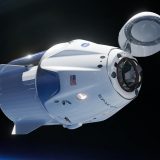Falklands War 2? Argentina’s new fighters a serious threat
by xairforces · Published · Updated
Argentina has placed an order for 24 Saabs – and they’re Top Gun aircraft not family saloons

Argentina Air Force Dassault Mirage IIIEA in November 2005 (Photo by Chris Lofting – www.airliners.net)
Argentina’s announcement that it plans to acquire 24 Saab Gripen fighter-bombers caused scarcely a ripple in the headlines last week, and so far has produced no reaction from Whitehall.
It should. The purchase calls the bluff on Britain’s current stance on the Falkland Islands. This is the first major purchase of new military aircraft by the Argentine government since the Falklands War 32 years ago.
Buying the Gripen shows serious intent. It is more capable than any aircraft the RAF currently deploys – and could match anything the RAF is likely to have in five to eight years’ time, which is when the Fuerza Aerea’s new attack planes are expected to become fully operational.
The plan to buy the new generation of the highly successful Swedish-designed Gripen aircraft was revealed by Argentina’s defence minister Agustin Rossi on 21 October during a visit to Brazil. In a joint press conference with his Brazilian counterpart he said the details “are to be worked out over the next four months”.
But it is already clear that the terms of the deal are of a global interest that goes far beyond the Falklands dispute.
The 24 aircraft destined for Argentina are being tacked on to an order for 36 Gripen for Brazil’s air force. That contract, due to be signed by December, involves a joint venture between Saab of Sweden – the plane’s original designer and manufacturer – and Embraer of Brazil, who will make a number of airframes.
Argentina now intends to be part of that joint venture, and is setting up a production line to make parts for the aircraft. At a later stage, Argentina and Brazil say they hope to develop the new advanced twin-seater version of the Gripen. They expect to find markets in Ecuador, Paraguay and Uruguay.
In other words, the partnership between Saab and Embraer aims to produce a Latin American advanced fighter for Latin American markets.
The Gripen is a highly agile single-seater fighter which proved itself in the air operations over Libya in 2011. “It was good to fly, reliable and easy to maintain – it was the automatic second choice for the allied air forces, barring the best of what their own nations had,” the RAF commander in the Mediterranean, Air Vice Marshal Edward Stringer, told me.
Brazil, which has a well developed civil and military aircraft industry of its own, chose the Gripen in preference to France’s Dassault Rafale and the US Boeing F18 Super Hornet. (Neither the Bae Typhoon nor the American Lockheed Martin F-35 reached the final round.)
The Gripen comes in several variants, including one for aircraft carriers, which raises the question – why was it not chosen for the two new Royal Navy aircraft carriers instead of the hideously expensive Lockheed Martin F-35 whose costs are still soaring?
For Argentina, the new aircraft will be more than a match for the present defences in and around the Falkland Islands. These consist of between four and five older-model Typhoon air defence fighters, and four or five Rapier air defence missile batteries, much like the ones that were first landed on the islands during fighting in 1982.
The garrison consists of a large company group of soldiers, and two or three hundred members of the RAF. The Navy has two inshore patrol vessels, with a frigate and a nuclear attack submarine visiting occasionally.
For Britain, it will be tough to beef up the Falklands defences at a time of increasing budget cuts: the Treasury has just informed the Ministry of Defence that it will be seeking a further 7.5 per cent cut in next year’s defence review.
The Tories are virtually committed to such a cut if they are re-elected next May. Yet the defence of the Falklands is part of the Margaret Thatcher hagiography and iconography. A Tory leader who bargains away sovereignty, allowing the Falklands to morph to the Malvinas, would be in trouble with the party, even today.
But it may be out of the hands of any British prime minister, whoever he or she may be, because Britain is more likely to be even more isolated than it was in 1982 if it comes to another scrap in the South Atlantic.
In 1982 Argentina was a military dictatorship with a terrible human rights record. Today democratic Argentina has the broad support of its Latin American allies, especially Brazil.
Nor is any present or future US administration guaranteed to back Britain in a further spat with Argentina. In 1982, remember, some in the Reagan administration such as his UN ambassador Jean Kirkpatrick sympathised with Argentina.
American indifference – or worse – could matter in one crucial respect. In eight years’ time, when our principal advanced strike aircraft will be the Lockheed Martin F-35, the US will be vital for maintenance of these aircraft, including the management of critical software codes.
All of this should be a warning to the UK government to start doing something to resolve the Falklands issue with due haste – before it becomes another victim of Cameron’s foreign policy philosophy: just in time, but never just good enough.


















